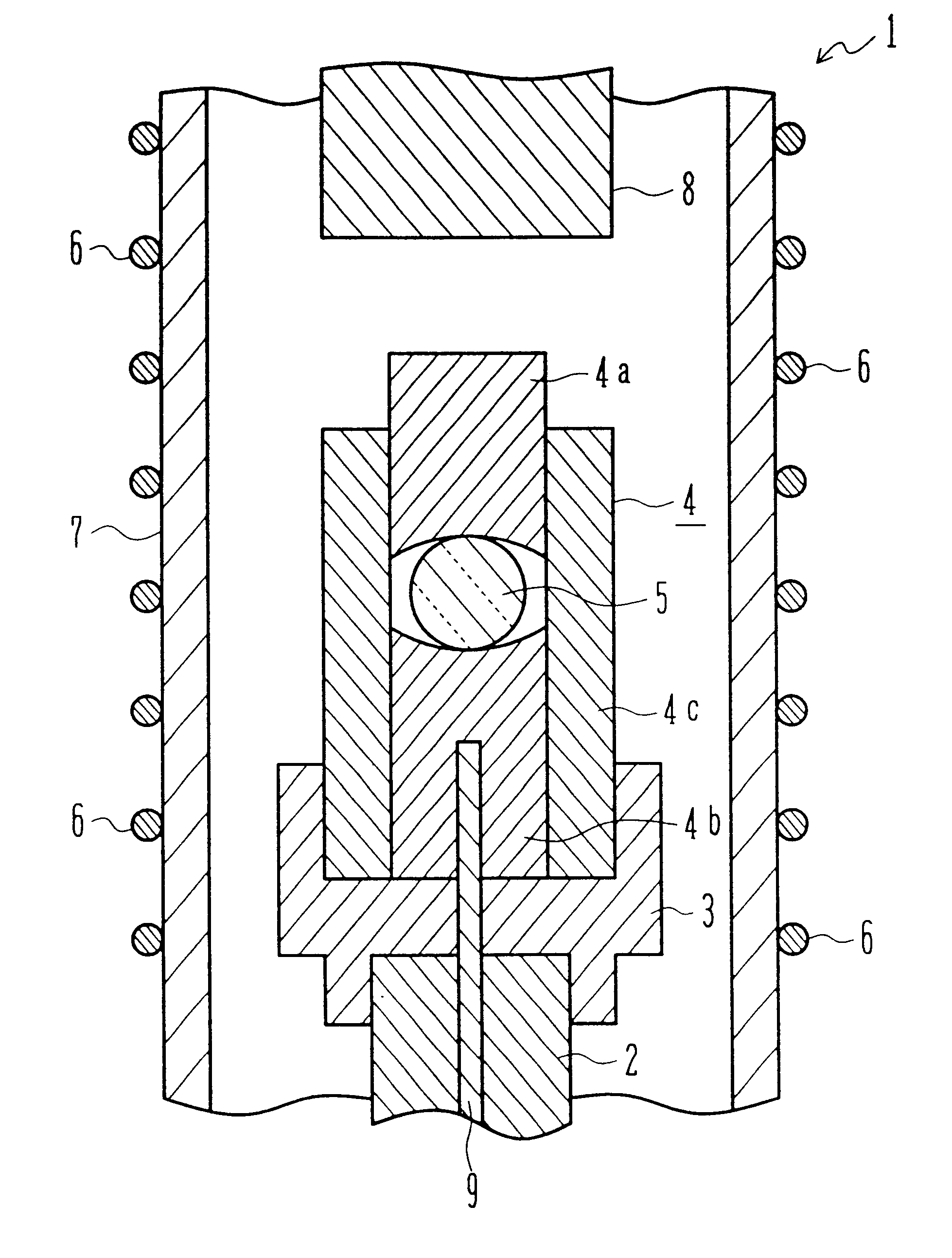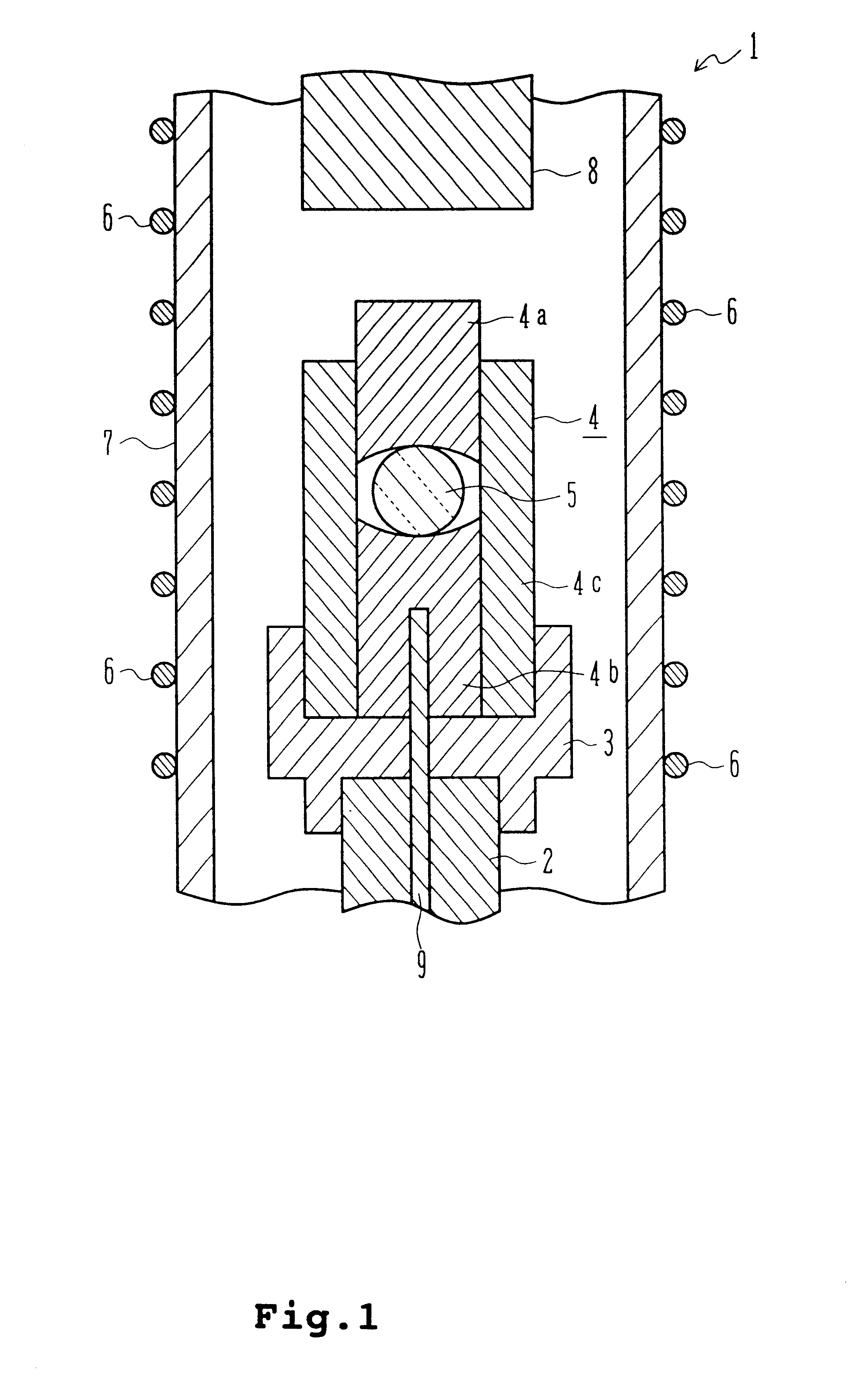Optical glass and its use
- Summary
- Abstract
- Description
- Claims
- Application Information
AI Technical Summary
Benefits of technology
Problems solved by technology
Method used
Image
Examples
example 17
(Preparation of Precision-Press Shapeable Material)
There was prepared a shaping mold having a concave portion having a predetermined form and an air-blowing narrow hole opened in the bottom of the concave portion, in which the perpendicular cross section of the concave portion was opened upwardly (upwardly in a perpendicular direction during use) to have the form of a trumpet. A glass melt of an optical glass having the composition in Example 1 was prepared. A spherical shaped article was obtained from the above glass melt according to the shaping method disclosed in JP-B-7-51446.
For the above shaping, shaping conditions shown in "Experimental Results 1" in the above JP-B-7-51446 were employed. That is, the concave portion of the above shaping mold had a "broadening angle .theta." of 15.degree., and the above narrow hole had a diameter of 2 mm. Further, the glass melt was directed to a site right above the above shaping mold through a flow pipe which was disposed so as to face its f...
example 18
(Preparation of Optical Part)
A non-spherical lens was obtained from the precision-press shapeable material obtained in Example 17 by precision-press shaping the material by means of a precision-press shaping machine shown in FIG. 1, under conditions where the shaping temperature was set a temperature at which the above material had a viscosity (glass viscosity) of 10.sup.8 Pa.multidot.s, the pressing pressure was set at 180 kg / cm.sup.2 and the pressing time was set for 10 seconds.
The so-obtained non-spherical lens had a remarkably high accuracy.
Effect of the Invention
As explained above, the optical glass of the present invention has properties of a high refractive index and high dispersion and can be easily obtained as an optical glass having both a low sag temperature T.sub.s and a low liquidus temperature L.T.
PUM
| Property | Measurement | Unit |
|---|---|---|
| Fraction | aaaaa | aaaaa |
| Fraction | aaaaa | aaaaa |
| Fraction | aaaaa | aaaaa |
Abstract
Description
Claims
Application Information
 Login to View More
Login to View More - R&D
- Intellectual Property
- Life Sciences
- Materials
- Tech Scout
- Unparalleled Data Quality
- Higher Quality Content
- 60% Fewer Hallucinations
Browse by: Latest US Patents, China's latest patents, Technical Efficacy Thesaurus, Application Domain, Technology Topic, Popular Technical Reports.
© 2025 PatSnap. All rights reserved.Legal|Privacy policy|Modern Slavery Act Transparency Statement|Sitemap|About US| Contact US: help@patsnap.com


